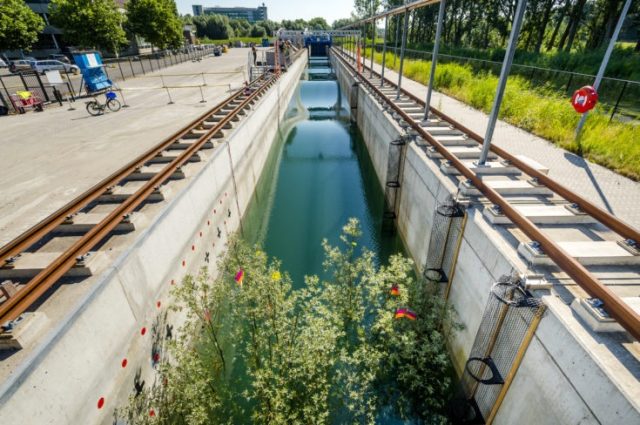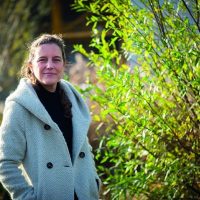Trees excellent at attenuating waves: first scientific evidence now available
A lot of claims are made worldwide about how nature – such as willow trees or mangroves – can help to provide protection against flooding, typhoons and tsunamis. Until now, however, there have been few studies looking at how natural systems behave in extreme conditions like super storms. How well do trees break waves, and can they cope? A paper published this week in Scientific Reports by scientists from Deltares, the Netherlands Institute for Marine Research (NIOZ) and Delft University of Technology, provides the first evidence about how we can best use trees for flood risk management.

2.5 metres
Deltares, Delft University of Technology and NIOZ conducted a trial in the Delta Flume in 2018 to see how a willow forest can attenuate waves. They published the results of this research in a scientific paper this week: Wave attenuation through forests under extreme conditions. Their main conclusions are that the trees can do an excellent job of attenuating waves up to wave heights of 2.5 metres. Without breaking. Trees are much more flexible than previously thought and bend well in response to the waves. With very high (>2.5 meters) and longer waves, however, the attenuation capacity of the trees lessens. The trees have most effect at medium-high water levels, when the wave passes through the middle of the canopy and therefore meets the largest tree surface.
Leaves have little effect, branches all the more
Lead author Bregje van Wesenbeeck (scientific director and coastal expert at Deltares) “On the basis of this trial, we have acquired new insights into the factors that are important in predicting the attenuation properties of vegetation. For example, we now know that the leaves of willows have little effect, but that side branches actually have more effect than we always assumed”. These properties are usually not included in the computer models used to estimate wave attenuation by vegetation.
Tree model
Su Kalloe, a PhD student at Delft University of Technology and co-author of the paper, conducted her master research in the Delta Flume and she is still working on these research results for her doctorate. She has studied all the trees in the flume using a range of methods. It turned out that the branches with side branches are important for wave attenuation and that the structure of the trees should therefore be taken into account as much as possible. “On the basis of those measurements and wave attenuation in the flume, I estimated the shape and surface area of each tree in detail. We use this tree model in the model runs that we describe in the publication and for the derivation of generic relationships for wave attenuation by trees under extreme conditions”. Those relationships are urgently needed for the design of hybrid flood defences, combined structures with nature in front of a hard barrier.
Combinations of hard and soft solutions
Van Wesenbeeck: ‘You can’t always just go around building dikes. Particularly in the context of climate change and sea level rise, we have to learn to work better with the natural systems that are already in place. The aim of this study is to establish a clear picture of the functions of those systems that can help us in this respect. So that we can design better solutions for different coastlines and river areas around the world. Combinations of natural landscapes and hard defences are promising and they can make many places in the world a lot safer. This study is an important step towards establishing design rules for innovative approaches of that kind. For example, we can now make much better calculations of how long a forest in front of a dike should be to provide the desired wave attenuation.”
“The further optimisation of the design rules in order to maximise not only protection against flooding but also biodiversity is an important challenge that we are addressing in our current field research,” says Tjeerd Bouma, a researcher with NIOZ.
The parties are preparing for follow-up research in the Delta Flume with mangrove trees, which are found on coasts in tropical regions. The mangroves are being grown now in a greenhouse at Deltares.
Financing and partners
The study of willow trees in the Delta Flume was conducted and co-financed by Deltares, Delft University of technology, NIOZ, Boskalis, Van Oord, Rijkswaterstaat, World Wildlife Fund, VP Delta, TKI Delta Technology and the Netherlands Organisation for Scientific Research (NWO).

